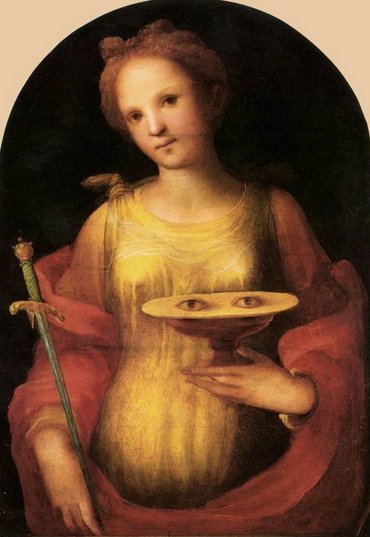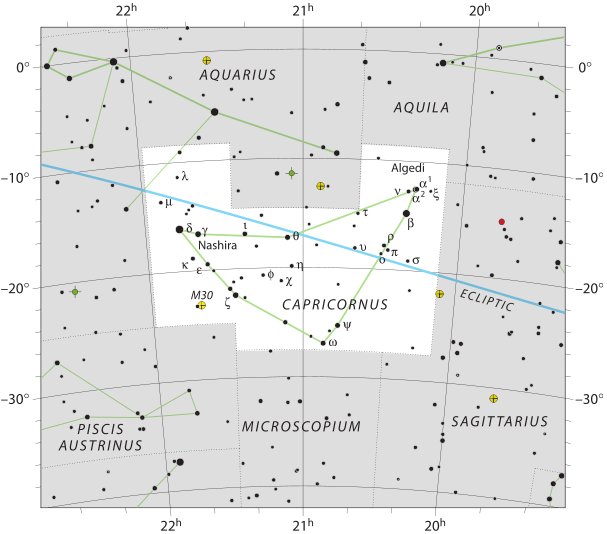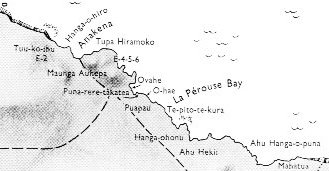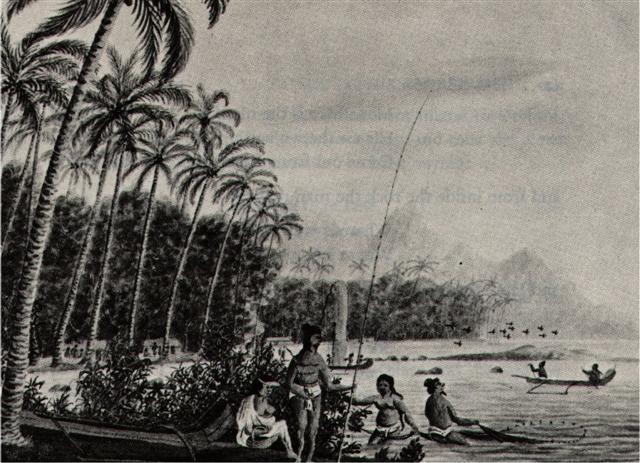276. Once again. Evidence suggests the renewal of the celestial fire ... The ceremony was performed with great pomp by the same officials who procured the new fire from heaven by reflecting the sun's rays either from a metal mirror or from a crystal on dry moss. Fire thus obtained is called by the Chinese heavenly fire and its use is enjoined in sacrifices: whereas fire elicited by the friction of wood is termed by them earthly fire, and its use is prescribed for cooking and other domestic purposes ... Like archaic China and certain Amero-Indian societies, Europe, until quite recently, celebrated a rite involving the extinguishing and renewal of domestic fires, preceded by fasting and the use of the instruments of darkness. This series of events took place just before Easter, so that the 'darkness' which prevailed in the church during the service of the same name (Tenebrae), could symbolize both the extinguishing of domestic fires and the darkness which covered the earth at the moment of Christ's death. In all Catholic countries it was customary to extinguish the lights in the churches on Easter Eve and then make a new fire sometimes with flint or with the help of a burning-glass. Frazer brings together numerous instances which show that this fire was used to give every house new fire ... had to occurr at a π date, as if to underline that also the circle on the plain of the year had to measure twice 3-14:
... The Chinese renewal of fire came on the 5th or 6th day after the solstice, and Dramasa (α Octantis, 88░ 57′ S) was positioned in the night of August 5 (*320 - *183) at Ga3-14 (→ π) ...
From 9h (heliacal Ga3-14) to 21h (nakshatra Ga3-13) there were *320 - *137 = *183 right ascension days. And when according to Manuscript E the Explorers (the Planets) had reached Easter Island it was in the first day of the month of Maro - the 'Dry' (Land) month had been reached at the position of JUNE 1 because here Agastya had consumed all the waters. *136 - *41 (Bharani) = *95 (Canopus) and here Ursa Major had lifted up her right front 'hand' (κ) - uplifted as when Land was brought up ('fished up') from the bottom of the Sea. ... On the twenty-fifth day [80 + 25 = 115] of the first month (Vaitu Nui), Ira and Makoi set sail; on the first day of June ('Maro'), the bow of Ira's canoe appeared on the distant horizon, came closer and closer on its course, and sailed along, and finally (one) could see the (new home) land ...
... The Pythagoreans make Phaeton fall into Eridanus, burning part of its water, and glowing still at the time when the Argonauts passed by. Ovid stated that since the fall the Nile hides its sources. Rigveda 9.73.3 says that the Great Varuna has hidden the ocean. The Mahabharata tells in its own style why the 'heavenly Ganga' had to be brought down. At the end of the Golden Age (Krita Yuga) a class of Asura who had fought against the 'gods' hid themselves in the ocean where the gods could not reach them, and planned to overthrow the government. So the gods implored Agastya (Canopus, alpha Carinae = Eridu) for help. The great Rishi did as he was bidden, drank up the water of the ocean, and thus laid bare the enemies, who were then slain by the gods. But now, there was no ocean anymore! Implored by the gods to fill the sea again, the Holy One replied: 'That water in sooth hath been digested by me. Some other expedient, therefore, must be thought of by you, if ye desire to make endeavour to fill the ocean ... At DECEMBER 1, corresponding to the day of Chrismas Eve at the time of Bharani, 24 Capricorni (below the capital C of CAPRICORNUS in the map below) was rising with the Sun at 21h - possibly as a hint to use 21h for looking at culminations which otherwise (had not the earth moved in its annular orbit) could have occurred at midnight (24 o'clock). 399 (February 3) + 29 = 428 (Ga4-18) = 2 * 214 = 4 * 107 = 364 + 64.
From the day 25 (as in the Julian equinox) of the great Sweet Water month of Vaitu Nui when Ira and Makoi set sail ... Mgv.: tu, life, being, existence ... to the Dry Land of Easter Island, from APRIL 25 (115) to JUNE 1 (151) there were 36 days. From APRIL 25 to "June 24 (the Day of St John) there were 36 + 23 = 56 days (8 weeks).
However, although the circle measured 365╝║ according to the ancient Chinese - just as in my model for correlating glyphs with stars - the cycle of Venus was 185 days longer than the cycle of Father Light and according to Joseph Needham at least some of the ancient Chinese preferred to use 3 half-years rather than 2. Which should be remembered when considering the fact that the number of glyphs on the G tablet (471) is half 3 * 314 (= 8 * 59 - 1).
The number of glyphs on the C tablet on the other hand covers 740 = 4 * 185 (= 2 * 370) regular days, as if measured out by Uranus:
... In the Olympian creation myth, as Hesiod tells it in the Theogony, Uranus came every night to cover the earth and mate with Gaia, but he hated the children she bore him. Hesiod named their first six sons and six daughters the Titans, the three one-hundred-armed giants the Hekatonkheires, and the one-eyed giants the Cyclopes. Uranus imprisoned Gaia's youngest children in Tartarus, deep within Earth, where they caused pain to Gaia. She shaped a great flint-bladed sickle and asked her sons to castrate Uranus. Only Cronus, youngest and most ambitious of the Titans, was willing: he ambushed his father and castrated him, casting the severed testicles into the sea. For this fearful deed, Uranus called his sons Titanes Theoi, or 'Straining Gods' ... ... Once upon a time there was an old woman who owned a great potato field (mara) where she planted her potatoes in spring and harvested them in autumn. She was famous all around for her many varieties of wonderful potatoes, and she had enough of them to sell at the market place. She planted her potatoes 7 in a row, placing her foot in front of her as a measure from one potato to the next. Then she marked the place with a bean - which would also give nourishment to the surrounding potatoes. Next she changed variety and planted 7 more followed by another bean, and this was the pattern she followed until all her 214 varieties had been put down in their proper places. She had drawn a map which she followed and from where each sort of potato could be located at the proper time for its harvest ... I was fashinated, when I happened to stumble on this Swedish TV program, because my 'once upon a time' was now and 214 (= 2 * 107) was surely no coincidence. She knew what she was doing. Let's therefore count: 214 * 7 (potatoes) + 213 (beans) = 1711. So what? Probably because 1711 = 59 * 29 ... 29 (Mercury was marking the dark night of the Moon) = 399 (Jupiter) - 370 (Uranus). ... The Moon was visible for 29 nights, and then her back side (●) was bathed in the vitalizing rays from Tane, making her grow (tupu) once again ... When the new moon appeared women assembled and bewailed those who had died since the last one, uttering the following lament: 'Alas! O moon! Thou has returned to life, but our departed beloved ones have not. Thou has bathed in the waiora a Tane, and had thy life renewed, but there is no fount to restore life to our departed ones. Alas ... And then the model with 360║ could be integrated by making room for the 12 Titans - or (south of the equator) twice 12: ... the first month of the Moriori year, was named Rongo (Lono). On the first of the new year the Moriori launched a small canoe to Rongo, although they built and used only rude craft for their fishing excursions. The canoe was manned by twelve figures symbolizing the personifications of the twelve months. Sometimes twenty-four figures were placed in the canoe, and Skinner interprets the additional twelve as representing the female counterparts of the months. As an old Maori once remarked. 'Everything has its female counterpart.' ... A curious diversion appears in the month list of the people of Porapora and Moorea in the Society Islands, which sheds light on the custom of the Moriori who sometimes placed 24 figures in the canoe which they dispatched seaward to the god Rongo on new years day. The names of the wives of the months are included, indicating that other Polynesians besides the Chatham Islanders personified the months ...
Women (W as in Cassiopeia) assemble fluids but Men (M as in Cassiopeia upside down) cannot. When the Tree (Jupiter) pushed the sky roof high it grew light and air entered in order to dry up the waters of night. ... South of the equator the Rainbow of the Babylonians seems to have corresponded to a double bow sign at the rain junction (te ua) where Sky and Earth lay in primal embrace: ... Sky (rangi) and Earth (papa) lay in primal embrace, and in the cramped, dark space between them procreated and gave birth to the gods such as Tane, Rongo and Tu. Just as children fought sleep in the stifling darkness of a hare paenga, the gods grew restless between their parents and longed for light and air. The herculean achievement of forcing Sky to separate from Earth was variously performed by Tane in New Zealand and the Society Islands, by Tonofiti in the Marquesas and by Ru (Tu) in Cook Islands. After the sky was raised high above the earth, props or poles were erected between them and light entered, dispelling the darkness and bringing renewed life. One detail which is iconographically of interest is whether the god responsible for separating Earth and Sky did so by raising the Sky with his upraised arms and hands, as in Tahiti and elsewhere, or with his feet as in New Zealand ...
|
|||||||||||||||||||||||||||||||||||||||||||||||||||||||||||||||||||||||||||||||||||||||||||||||||||||||||||||||||||||||||||||||||||||||||||||||||||||||||||||||||||||||||||||||||||||||||||||||||||||||||||||||||||||||||||||||||||||||||||||||||||||||||||||||||

.jpg)



















